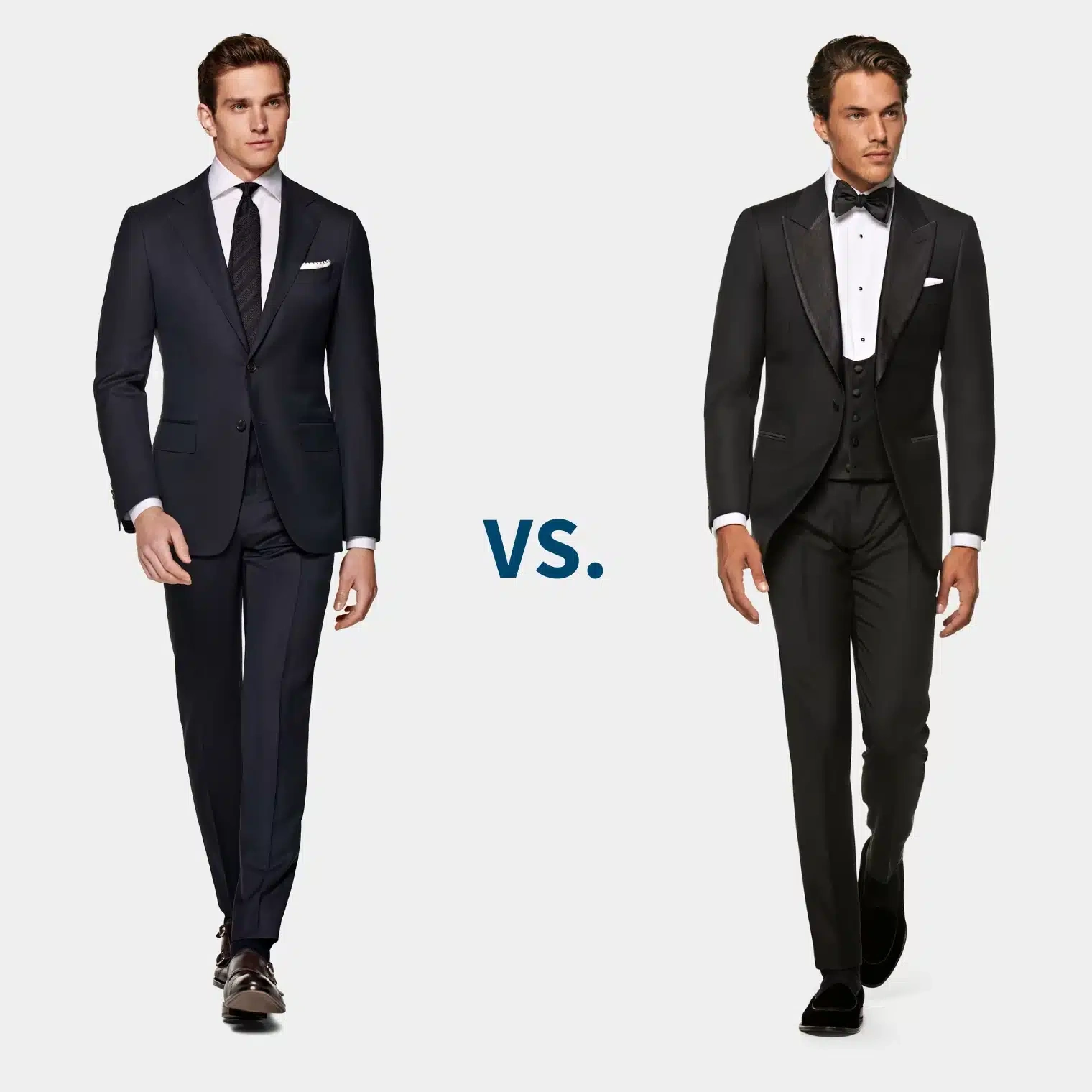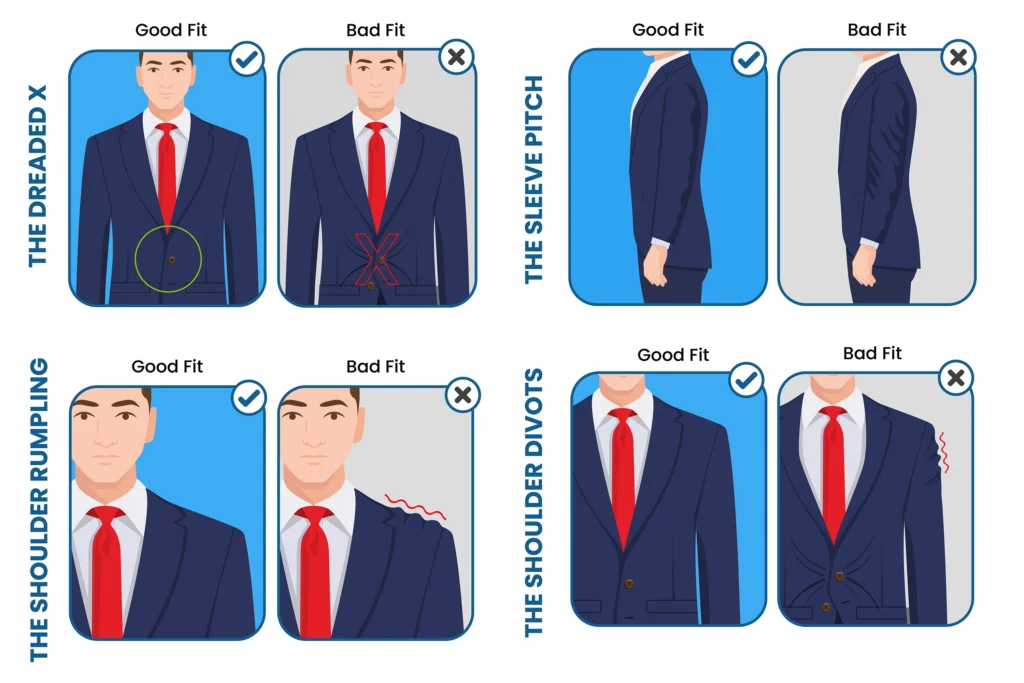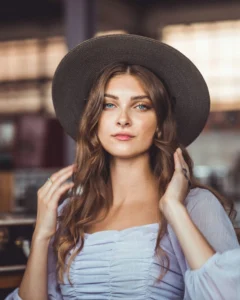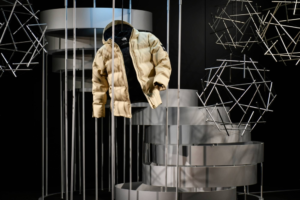
Overview
When it comes to choosing the right attire for various occasions, understanding the distinctions between a dinner suit vs business suit is crucial. Both have their unique characteristics and purposes, and selecting the appropriate one can greatly impact your appearance and confidence. In this guide, we will explore the differences, history, design elements, and appropriate uses for each suit type, helping you make an informed decision for any event or professional setting.
Historical Background
Origins of the Dinner Suit
The dinner suit, often known as the tuxedo or evening suit, has its roots in the late 19th century. They originally created it as a more relaxed alternative to the traditional tailcoat and introduced it as evening wear for men. The tuxedo gained prominence in the early 20th century and became a staple for formal events. Its evolution reflects a shift towards a more relaxed yet still sophisticated evening attire.
Origins of the Business Suit
The business suit originated in the 19th century as a formal alternative to the traditional dress coat. Initially popularized in the UK, the business suit evolved from Victorian-era clothing into the modern, structured garments worn in professional settings today. Its development reflects changing attitudes towards professionalism and comfort in the workplace.
Design and Structure
Dinner Suit
The dinner suit is designed with elegance and formality in mind. Key features include:
- Jacket: Typically features satin or silk lapels, a single-breasted design, and a more fitted cut compared to business suits. Commonly adorned with a bow tie, the jacket often includes a single button closure or two buttons in some variations.
- Trousers: Tailors usually make the trousers from the same fabric as the jacket and often design them with a silk or satin stripe along the side.
- Fabric Options: Common fabrics include wool, velvet, and silk, chosen for their luxurious appearance and feel.
- Colors: The classic color for a dinner suit is black, but navy and midnight blue are also popular choices.
Business Suit
The business suit is designed for both versatility and professionalism. Key features include:
- Jacket: Features notch lapels, a more relaxed fit, and often includes two or three buttons. It may also have a single or double-breasted design.
- Trousers: Typically flat-front and designed to match the jacket. They might feature subtle patterns or textures.
- Fabric Options: Tailors typically use wool, cotton, and synthetics, with a preference for wool due to its durability and breathability.
- Colors: Standard colors include gray, navy, and brown, offering a range of options for various professional settings.
Occasions and Dress Codes
Dinner Suit
Dinner suits are meant for formal events that require a high level of sophistication. Common events include:
- Weddings: Especially for formal or black-tie events.
- Gala Events: Charity balls, formal dinners, and high-profile social gatherings.
- Black-Tie Dinners: Corporate or ceremonial events requiring a strict formal dress code.
The dress code for a dinner suit is typically black-tie or white-tie, emphasizing the suit’s role in high-formality contexts.
Business Suit
Business suits are made for various professional environments. Appropriate occasions include:
- Office Environments: Daily business attire in corporate settings.
- Conferences: Professional events where business casual or formal attire is expected.
- Interviews: Job interviews where a polished and professional appearance is crucial.
The dress code for a business suit ranges from formal to casual, depending on the company’s culture and the event.
Cultural and Regional Variations

Differences in Dinner Suits Across Cultures
In Western cultures, the classic black dinner suit is the norm. However, in other regions, variations might include different colors and styles. For instance:
- Europe: Midnight blue is a popular alternative to black, often seen at formal events.
- Asia: Traditional attire sometimes influences formal wear, incorporating elements from local dress codes.
Regional Variations in Business Suits
Business suits also exhibit regional differences:
- US: Business suits are often more relaxed with a preference for lighter colors and fabrics.
- UK: A more traditional approach with darker colors and classic patterns.
- Asia: Tailors may design suits for a precise fit and use lightweight fabrics for warmer climates.
Maintenance and Care
Dinner Suit
Maintaining a dinner suit involves specific care:
- Cleaning: Professional dry cleaning is recommended due to the delicate fabrics.
- Storage: Use a padded hanger and a garment bag to preserve the suit’s shape and fabric.
Business Suit
Business suits require regular upkeep to maintain their appearance:
- Cleaning: Dry clean regularly or spot clean as needed. Wool suits can be refreshed with a steam.
- Storage: Store on a broad, padded hanger and use breathable garment bags to avoid dust and maintain shape.
Trends and Modern Interpretations
Current Trends in Dinner Suits
Modern dinner suits are embracing various styles:
- Slim Fit: A more contemporary cut that enhances the suit’s sleek appearance.
- Patterned Fabrics: Incorporation of subtle patterns or textures for a unique look.
- Colour Variations: Expanding beyond traditional black to include navy, burgundy, and even patterned designs.
Explore More: Best Free Mann’s Fashion Resources: Everything You Need to Know
Modern Takes on Business Suits
Business suits are evolving with current trends:
- Casualization: Blending formal elements with casual styles, such as combining suits with sneakers or casual shirts.
- Customization: Rising popularity of custom and made-to-measure suits for a perfect fit.
- Sustainable Fabrics: Use of eco-friendly materials and ethical production practices.
Choosing the Right Suit

Factors to Consider
When choosing the right suite between a dinner suit vs business suit, keep these factors in mind:
- Occasion: Choose the suit based on the event’s formality and dress code.
- Body Type: Choose a fit that complements your physique and enhances comfort.
- Personal Style: Reflect your personal taste while adhering to the event’s requirements.
How to Properly Fit Each Suit
- Dinner Suit: Make sure the fit is snug in the shoulders and chest, with sleeves and trousers at the right length for a polished appearance.
- Business Suit:Prioritize comfort and practicality with a well-tailored fit that allows easy movement and looks professional.
FAQs
1. Can a business suit be worn to a formal event?
A standard business suit is generally not suitable for formal events that require a dinner suit. For such occasions, a dinner suit or tuxedo is more appropriate.
2. How often should I have my dinner suit dry cleaned?
Dinner suits should be dry cleaned sparingly. Ideally, only when there are visible stains or after significant wear, as frequent cleaning can damage the fabric.
3. Can I wear a dinner suit for a semi-formal event?
Yes, a dinner suit can be worn for semi-formal events if the dress code is black-tie optional. However, a business suit might be more appropriate for less formal occasions.
4. What is the difference between a tuxedo and a dinner suit?
A tuxedo is a specific type of dinner suit characterized by its satin or silk lapels and formal bow tie. The term “dinner suit” covers a range of formal evening wear.
5. Are there any modern alternatives to traditional business suits?
Yes, modern alternatives include casual business attire such as blazer and chinos combinations, and suits made from innovative, sustainable materials.
Conclusion
Choosing between a dinner suit vs business suit involves understanding their distinct purposes and characteristics. A tailor designs a dinner suit for formal occasions, emphasizing elegance and tradition, while a business suit serves professional settings with versatility and practicality. By considering the event, personal style, and proper maintenance, you can select the right suit to make a lasting impression in any setting.







